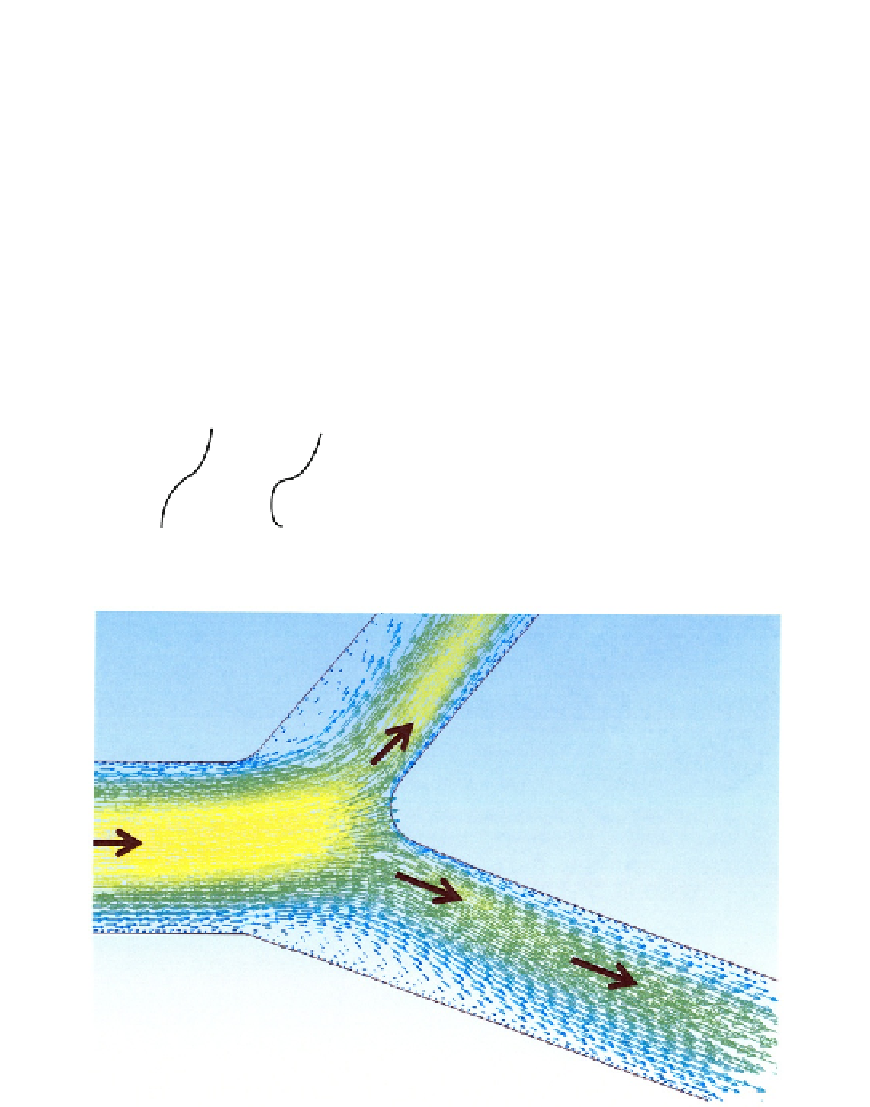Biomedical Engineering Reference
In-Depth Information
negative, and therefore, the normal parabolic flow profile at the wall matches this sign,
satisfying the momentum equation. However, as the pressure gradient approaches zero,
the flow begins to separate from the wall because the signs no longer are the same. As the
gradient becomes positive, the flow will completely separate from the wall, forming a
recirculation zone (
Figure 5.17
). From this image we can see that flow separation tends to
occur at a region where the near wall fluid flow rate decreases.
Another interesting phenomenon that occurs at bifurcations is that the flow skews
toward one of the walls, if the bifurcation angles are large enough. Due to the velocity of
the fluid entering the bifurcation, more flow typically moves toward the inner walls of the
bifurcation and therefore the fluid moves away from the outer walls (
Figure 5.18
). Also,
the flow at the outer wall typically slows down, because of this skewed velocity profile.
The flow in this region is therefore not fully developed; it does not have the typically para-
bolic flow profile. The highest velocity is no longer at the centerline but it moves closer to
the inner bifurcation wall. The entrance length is a fluid property that quantifies the
FIGURE 5.17
Effects of a pressure gradient on the flow
profile near the wall. With an adverse (or positive) pressure
gradient along the wall, the flow would tend to separate. With
a negative or zero wall pressure gradient, the flow would not
likely separate.
u
u
u
∂
p
∂
x
∂
p
∂
x
=
0
∂
p
∂
x
>
0
< 0
FIGURE 5.18
Flow skew at a bifurcation, where the highest velocity blood flow is no longer at the centerline
(highest velocity is marked by black arrows). The extent of flow skewing is determined by the geometry of the
bifurcation.













Search WWH ::

Custom Search